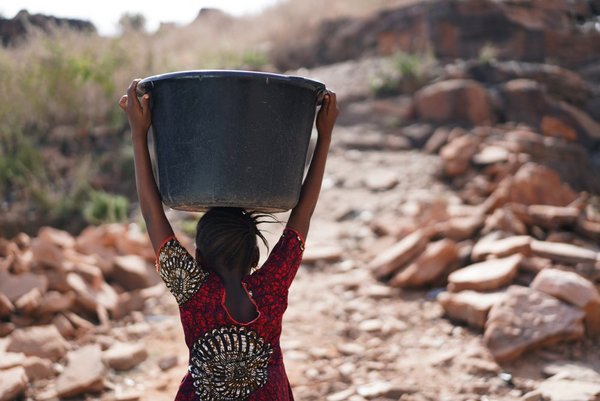 Read this article in French
Read this article in French- Share this article
- Subscribe to our newsletter
Many SDG targets far out of reach
The world is still far from achieving the Sustainable Development Goals (SDGs), as an analysis by the Food and Agriculture Organization of the United Nations (FAO) which was published in September 2021 shows.
"It's an alarming picture, in which progress on many SDG targets has been reversed, with a significant impact on all aspects of sustainable development and making the achievement of the 2030 Agenda even more challenging," said FAO Chief Statistician, Pietro Gennari.
The analysis Tracking progress on food and agriculture-related SDG indicators 2021 focuses on eight SDGs (1, 2, 5, 6, 10, 12, 14 and 15). It is FAO's third assessment of its kind, and is based on the latest data and estimates available.
Below are some of the areas in which the world is falling behind or making negligible progress.
- The COVID-19 pandemic might have pushed an additional 83-132 million people into chronic hunger in 2020, making the target of ending hunger even more distant.
- An unacceptably high proportion of food (14 per cent) is lost along the supply chain before it even reaches the consumer.
- Agricultural systems bear the brunt of economic losses due to disasters.
- Small-scale food producers remain disadvantaged, with women producers in developing countries earning less than men, even when they are more productive.
- Food price volatility has increased, due to the constraints placed by the COVID-19 pandemic and associated lockdowns.
- Progress remains weak in maintaining plant and animal genetic diversity for food and agriculture.
- Gender inequalities in land rights are pervasive.
- Discriminatory laws and customs remain obstacles to women's tenure rights.
- Water stress continues to be alarmingly high in many regions, threatening progress towards sustainable development.
Areas in which progress is being made include:
- implementing measures against illegal, unreported and unregulated (IUU) fishing
- sustainable forest management
- eliminating agricultural export subsidies
- investment to boost agricultural productivity in developing countries, and duty-free access for developing and Least Developed Countries (LDCs) particularly for agricultural product
The report stresses the need to scale up investment in agriculture, improve access to new agricultural technologies, credit services and information resources for farmers, support small-scale food producers, conserve plant and animal genetic resources for food and agriculture, adopt measures to counter food price volatility and prevent potentially hazardous events from devolving into full-blown disasters.
It also calls for more action to use water more efficiently in regions most affected by high water stress, better targeted interventions to reduce food losses and waste and more protection of terrestrial and forest ecosystems. It suggests much more progress is needed both regarding the legal and practical aspects of women's land rights and to combat the threat of IUU fishing to the sustainability of global fisheries. Finally, the report makes an urgent call for more and better data.
(FAO/ile)
Read more at FAO website





Add a comment
Be the First to Comment